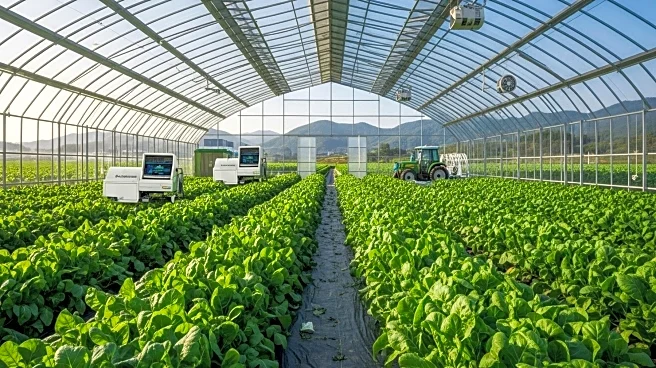What's Happening?
The global starter fertilizers market is projected to grow significantly, with estimates indicating a rise from USD 7.41 billion in 2024 to USD 15.68 billion by 2032. This growth is driven by several factors, including advancements in agricultural technology, shifting consumer preferences, and supportive regulatory policies. The market is seeing increased adoption of innovative crop nutrition solutions and applications across diverse farming systems. Companies in the sector are focusing on strategic partnerships, product innovation, and capacity expansion to capture new opportunities and enhance competitiveness. The fastest-growing region during this forecast period is expected to be North America, reflecting strong consumer demand and investment in agricultural innovation.
Why It's Important?
The expansion of the starter fertilizers market is crucial for the agricultural industry, as it supports sustainable farming practices and enhances crop yields. This growth reflects a broader trend towards sustainable agriculture, which is essential for meeting global food demands and addressing environmental concerns. The increased focus on eco-friendly practices and smart agriculture systems is likely to generate new opportunities for stakeholders, encouraging innovation and investment in the sector. As the market grows, it will also contribute to economic development, particularly in regions with strong agricultural sectors. Companies that successfully navigate this evolving landscape stand to gain a competitive edge and secure long-term growth.
What's Next?
Looking ahead, stakeholders in the starter fertilizers market are expected to emphasize research and development investments, scalable business models, and collaborative ventures. These efforts will not only strengthen the market size but also ensure long-term sustainability. Companies may focus on expanding their geographic reach and forming strategic partnerships to enhance their market presence. Additionally, the integration of digital transformation and data-driven decision-making will become central to maintaining competitiveness. As the market continues to evolve, stakeholders will need to adapt to changing consumer demands and regulatory environments to capitalize on emerging opportunities.











